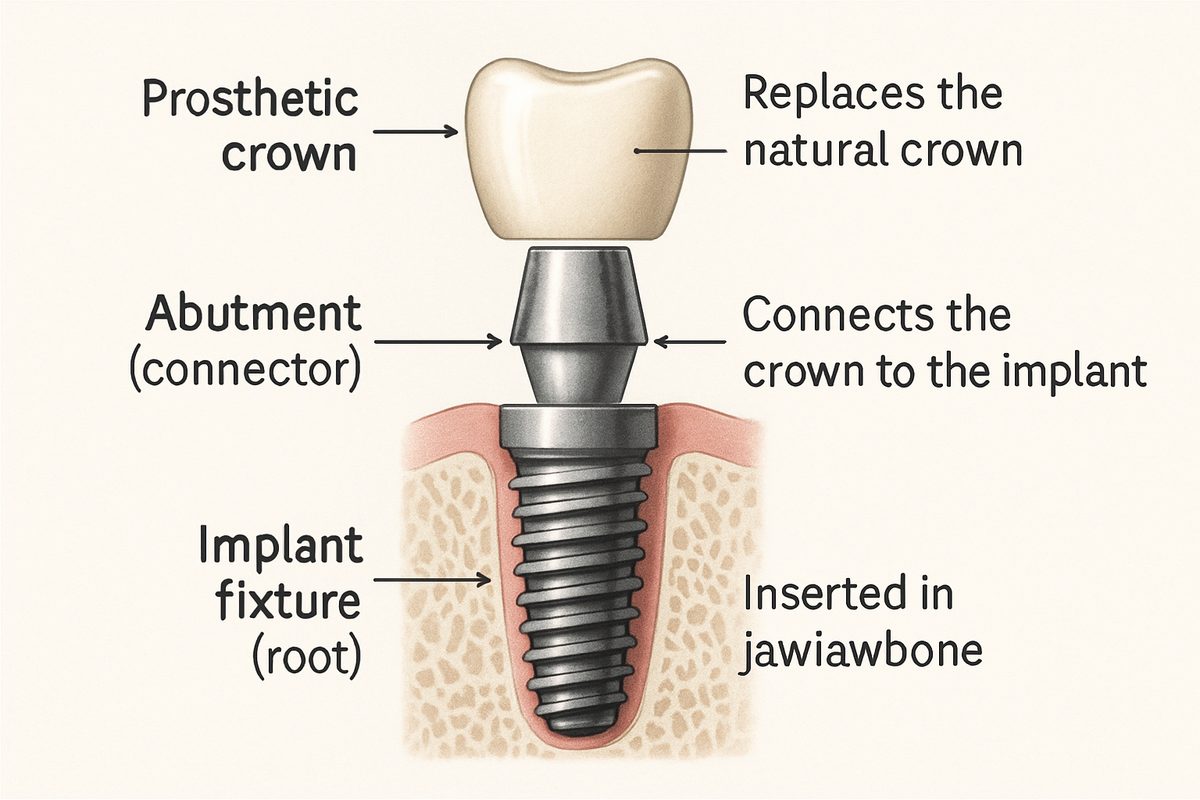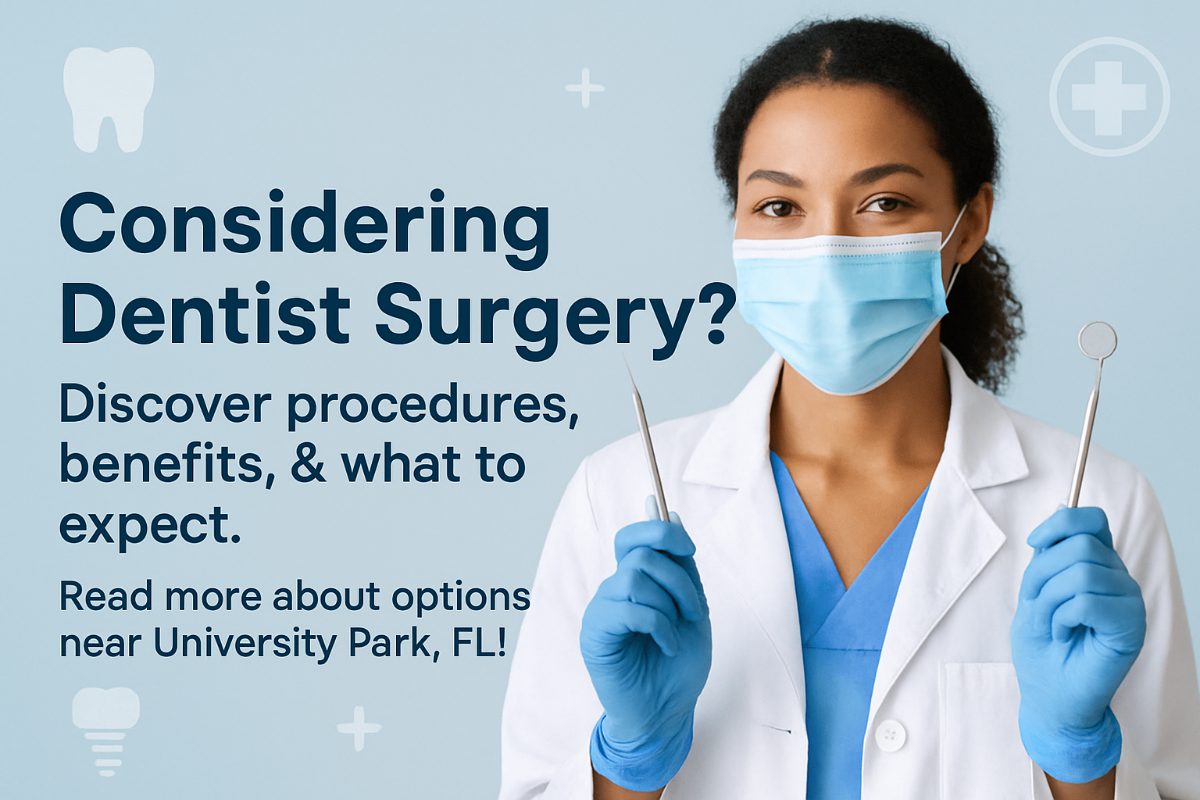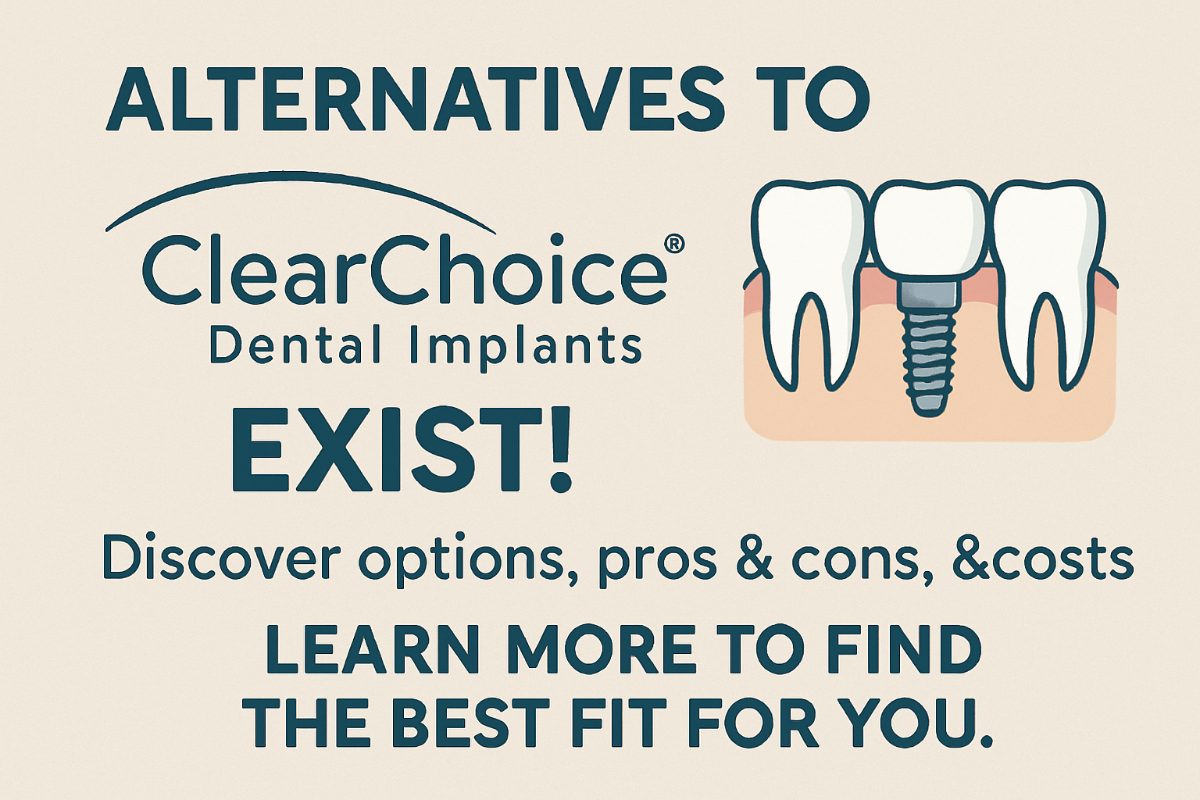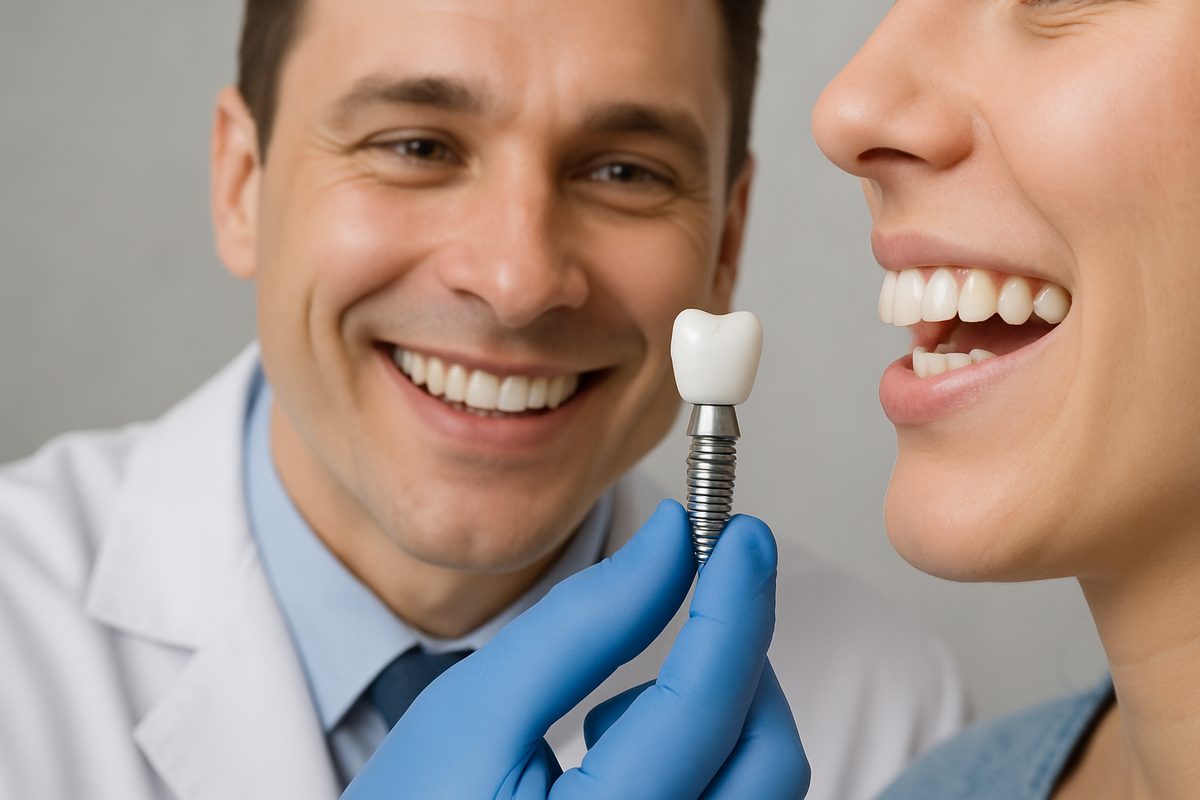blog - [City], [state]
Tips, Facts, And The
Latest In Dentistry

Understanding The Anatomy Of A Dental Implant By University Park, FL
Posted in Dental Implants

This post explains the anatomy of a dental implant in University Park, FL and why knowing the parts matters for care, comfort, and long‑term outcomes. If you’re considering implants or already have one, this guide will walk you through the main components and what they mean for treatment near University Park, FL.
What Is The Anatomy Of A Dental Implant Near University Park, FL?
The phrase anatomy of a dental implant describes the main pieces that make an implant work: the part placed in the bone, the connector, and the visible tooth replacement. Understanding each piece helps you ask the right questions about materials, fit, and maintenance when you meet a provider near University Park, FL.
Main Parts: Implant Fixture, Abutment, and Prosthetic
The implant fixture (the “root”)
The implant fixture is a metal post that acts like a tooth root. Fixtures are usually shaped like screws and come in different lengths and diameters to match bone size and location. Threads help stabilize the implant in bone. Common materials are titanium (widely used for strength and proven bone integration) and zirconia (a ceramic option for metal‑sensitive patients or aesthetic zones). Fixture choice affects stability, load capacity, and long‑term success.
The abutment (the connector)
The abutment links the fixture to the prosthetic tooth. There are stock abutments (pre‑made) and custom abutments shaped to match your gum line and angulation. Angled abutments correct implant tilt so the final tooth looks and functions naturally. Abutment fit is critical for preventing gaps where bacteria can collect and for achieving good esthetics and bite function.
The crown or prosthesis
The crown (or full prosthesis for bridges and full arches) is the visible tooth. Crowns can be screw‑retained (easy access for adjustments) or cemented (clean look but can trap cement if not placed carefully). Materials include porcelain layered on metal or zirconia for a natural appearance. The prosthesis design affects chewing ability, speech, and how easy the area is to keep clean.
How The Anatomy Of A Dental Implant Supports Osseointegration
Osseointegration is the process where bone bonds to the implant fixture. Surface treatments (like grit‑blasting, acid etch, or special coatings) increase surface area and encourage faster bone growth. Fixture thread design and tapered shapes provide initial mechanical stability while bone heals. Typical healing before full loading ranges from about 3 to 6 months depending on bone quality, location, and whether grafting was needed.
Variations & Advanced Options For The Anatomy Of A Dental Implant Near University Park, FL
Zygomatic and full‑arch implants
When upper jaw bone is limited, zygomatic implants anchor into the cheekbone and use longer fixtures. Full‑arch implant systems use multiple implants to support a bridge and can change the usual implant anatomy to meet complex needs for patients near University Park, FL.
Bone grafts, sinus lifts, and site preparation
Missing bone can change implant planning. Bone grafts or sinus lifts add or reposition bone to support the fixture. These steps lengthen treatment but allow for predictable implant placement and better long‑term outcomes.
Immediate placement and loading
Some cases allow immediate implant placement after extraction and same‑day provisional crowns. The implant anatomy (fixture design and primary stability) and the clinical situation determine whether immediate loading is safe. Your surgeon will evaluate bone quality and implant torque to decide.
What The Implant Anatomy Means For Longevity And Home Care
Good component fit and proper material choices reduce risk of complications like screw loosening, crown fracture, or peri-implantitis (bone loss from infection). Daily cleaning with a soft toothbrush, interdental brushes or floss designed for implants, and regular professional checkups are essential. Consider a water flosser for hard‑to‑reach areas. If you notice swelling, bleeding, or looseness, contact your implant team promptly.
- Brush twice daily and clean between teeth and implants daily
- Use non‑abrasive paste and safe interdental tools
- Keep regular maintenance visits for hygiene and fit checks
About Speranza Dental Implant Centers
Speranza Dental Implant Centers serves patients in the Sarasota/University Park, FL area with a prosthodontist and an oral surgeon working together on complex and routine implant care. The practice uses a fully digital workflow, an on‑site lab for faster restorations, and advanced options like IV sedation and zygomatic implants. Financing and flexible scheduling help make treatment more accessible.
Next Steps: Understanding Your Implant Anatomy During a Consultation
If you want a personalized review of the anatomy of a dental implant in University Park, FL, schedule a consultation to discuss your bone, implant options, timeline, and costs. A brief exam and digital imaging will clarify which parts and materials are best for your case and help create a care plan that supports long‑term success.





